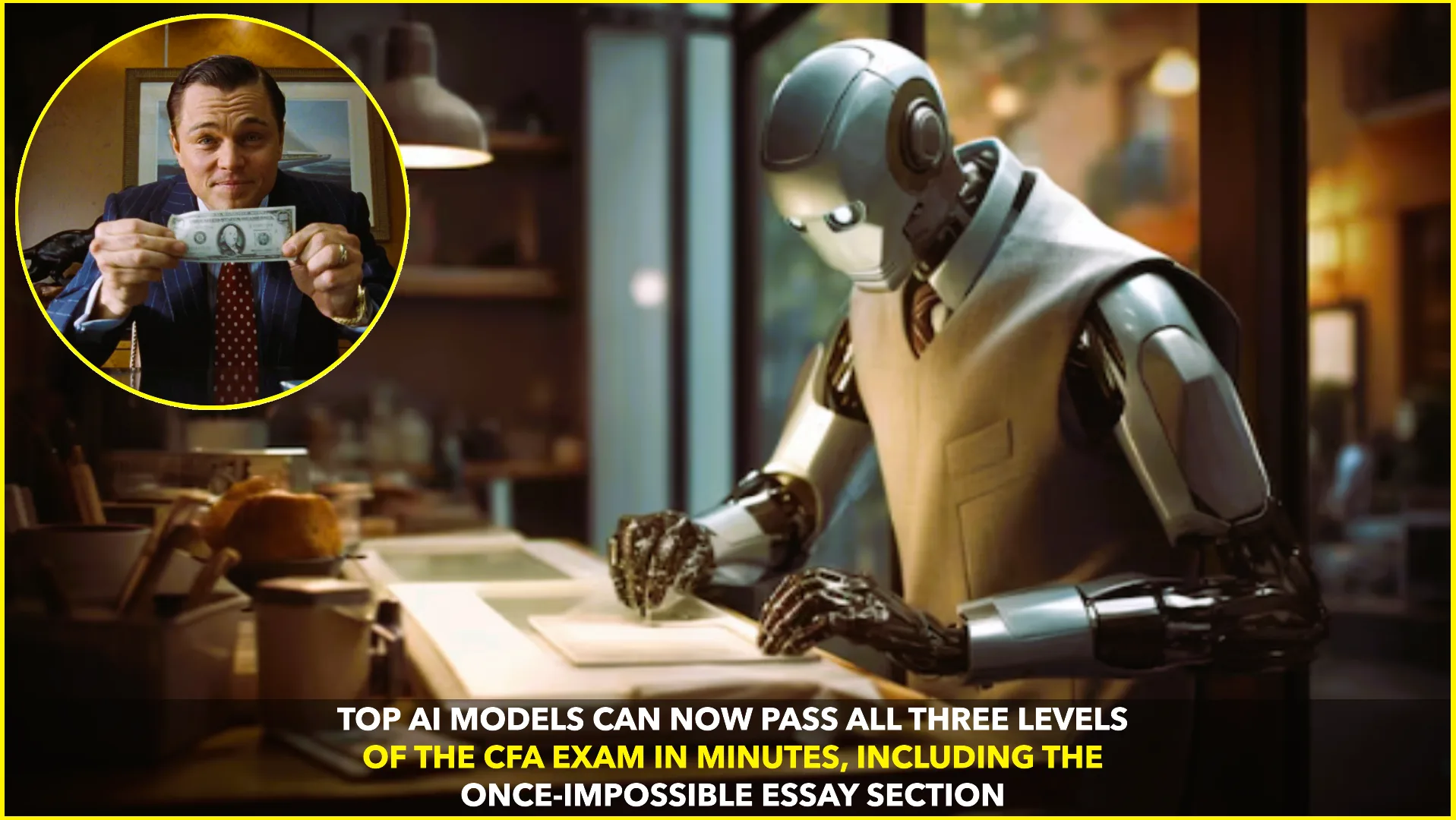AI Triumphs CFA
In a breakthrough that’s turning heads in finance, researchers from New York University’s Stern School and AI‐wealth platform GoodFin have shown that advanced AI models from OpenAI, Google, and Anthropic can now pass all three levels of the Chartered Financial Analyst (CFA) exam. That includes the notoriously difficult Level III, which relies heavily on long-form essays and real-world scenario reasoning — a section AI models failed just two years ago. Fast Company+4arXiv+4Tom’s Guide+4
This result is more than a curiosity. The CFA is regarded as one of the most rigorous credentials in finance, requiring not just factual knowledge but deep conceptual understanding, judgment, and the ability to craft investment strategies. Human candidates usually commit over 1,000 hours of focused study over years to clear all levels. Entrepreneur+1
What changed?
Two major developments made this leap possible:
- Reasoning‐capable models: The AI models evaluated weren’t just memorization engines; they were designed to break down complex problems step by step.
- Chain-of-thought prompting: In this technique, the AI is prompted to “show its work”—i.e. explain how it arrived at its answer. That helps the model not only pick the right answer but demonstrate the pathway. InvestmentNews+3Tom’s Guide+3Financial Times+3
Star Performers & Scores
The study evaluated 23 advanced language models using both multiple-choice and essay questions from mock CFA exams. Tom’s Guide+3arXiv+3Financial Times+3 Among them:
- OpenAI’s o4-mini achieved a composite score of 79.1 %.
- Google’s Gemini 2.5 Flash came in with 77.3 %.
- Anthropic’s Claude Opus 4 followed at 74.9 %. InvestmentNews+1
These aren’t marginal scores — they’re comfortably above the typical passing threshold. And crucially, they include success on the essay portion, which was long considered the stumbling block for AI.
All the top models completed the full exam in minutes. What would take a human years of preparation, they handled in a fraction of the time. Financial Times+3Tom’s Guide+3Fast Company+3
What It Means — and What It Doesn’t
This development raises big questions — but also important caveats.
What it suggests:
- AI is closing in on tasks that require domain expertise and complex reasoning, not just rote recall.
- The boundary between human advantage and machine ability in specialized fields like finance is shifting.
- Professionals may increasingly use AI as a tool rather than seeing it as a replacement — for example, delegating analytical work but keeping judgment, client relationships, and ethics in human hands.
What it doesn’t (yet) prove:
- Passing an exam is not the same as real-world success. Financial decisions involve nuance, accountability, moral judgment, and client relationships, areas where AI still lags.
- The CFA credential doesn’t come only from exams: human candidates also undergo 4,000 hours of qualifying work experience, submit references, and complete ethics training.
- Model performance may still rely on exposure to training data or leaks; evaluations strive to avoid that but it remains a concern in such research.
Anna Joo Fee, CEO of GoodFin, put it well: “There are things like context and intent that are hard for the machine to assess right now. That’s where a human shines.” Tom’s Guide+2Financial Times+2
What’s Next?
This study, titled “Advanced Financial Reasoning at Scale: A Comprehensive Evaluation of Large Language Models on CFA Level III”, is already shaping discussion in finance and AI circles. InvestmentNews+3arXiv+3Financial Times+3 It offers a benchmark for future models and sets the stage for more advanced research into AI’s real-world role in decision-making. arXiv+1
If AI starts reliably handling complex reasoning tasks like investment planning, risk analysis, and portfolio strategy, the role of financial professionals may shift — from doing the calculations to overseeing AI, interpreting its outputs, ensuring ethical practice, and focusing on human connection.
But for now, this is a milestone more than a revolution. It shows that AI is getting closer, but not that it has fully arrived.










